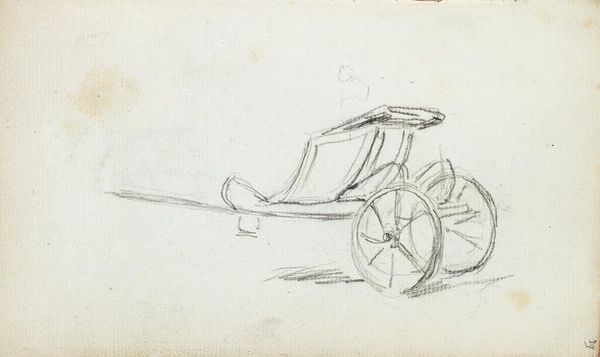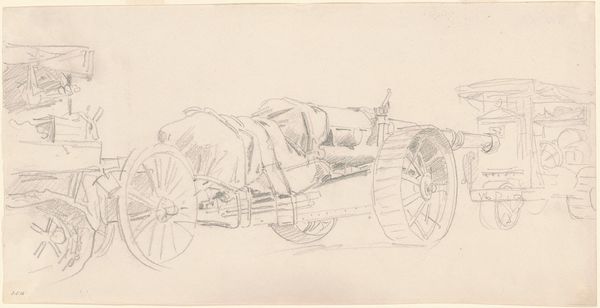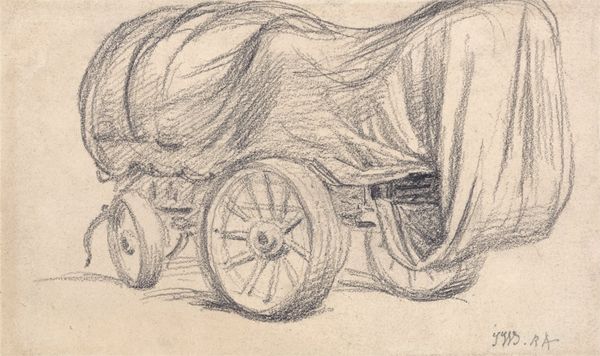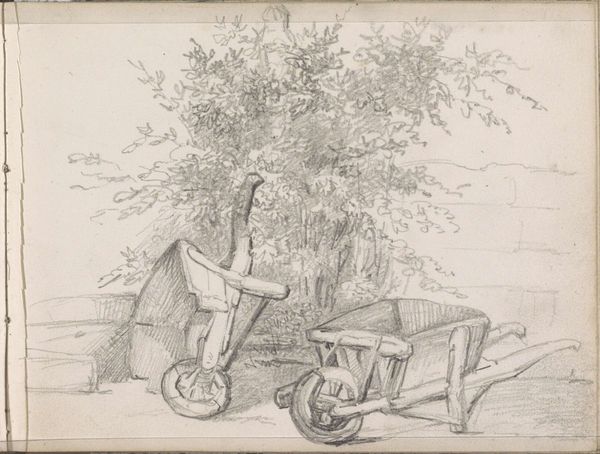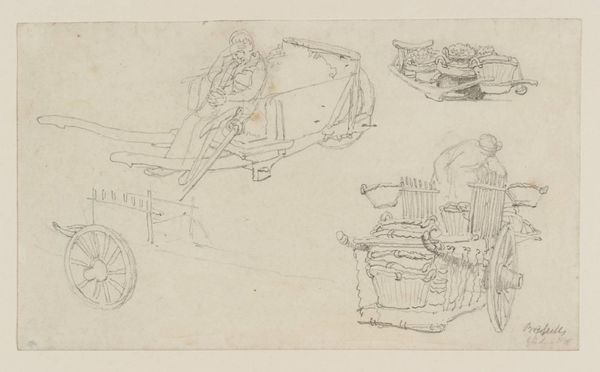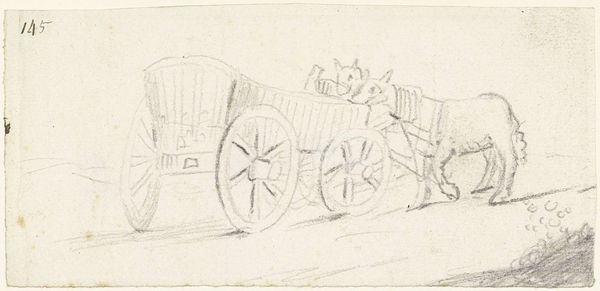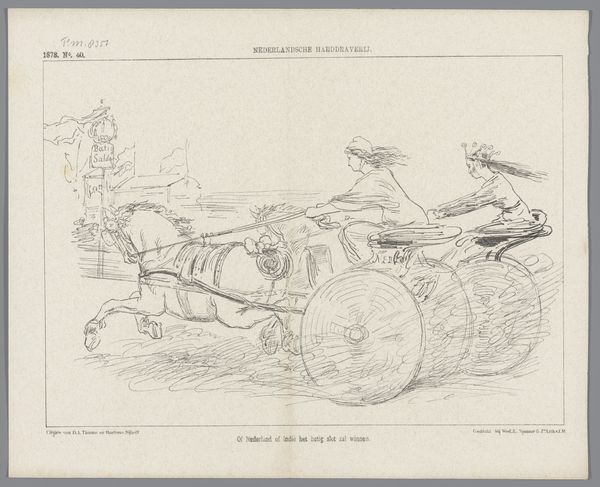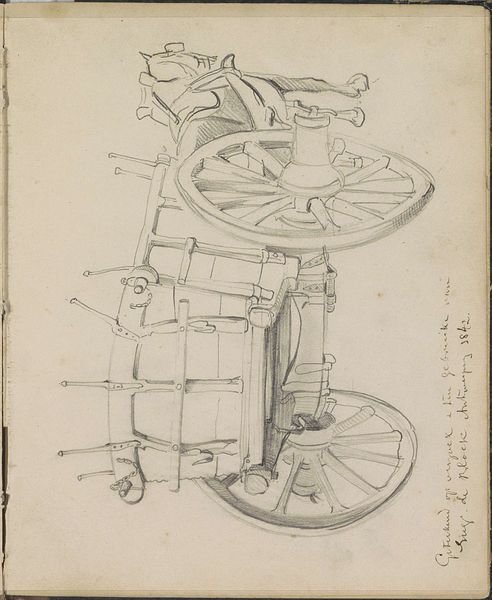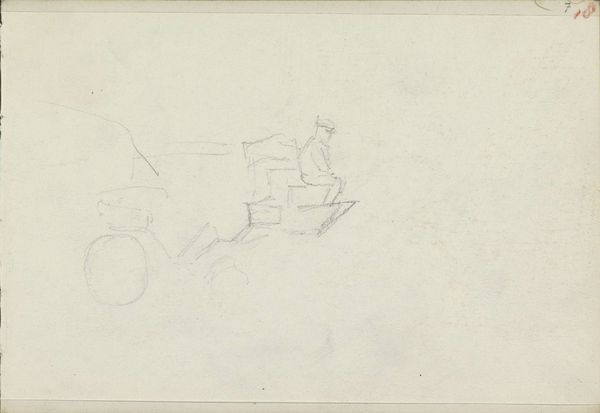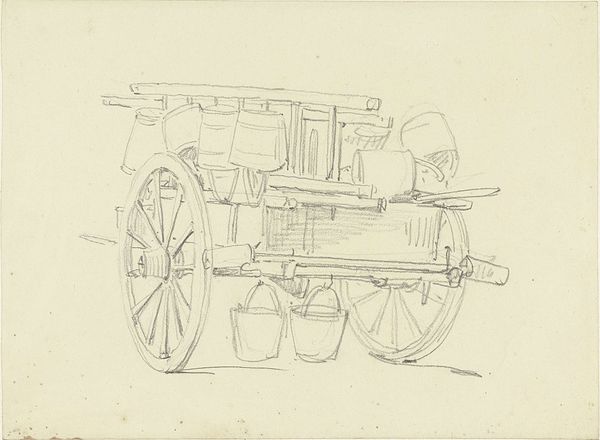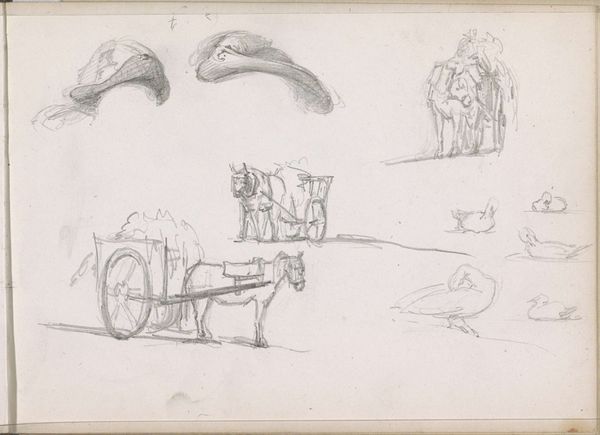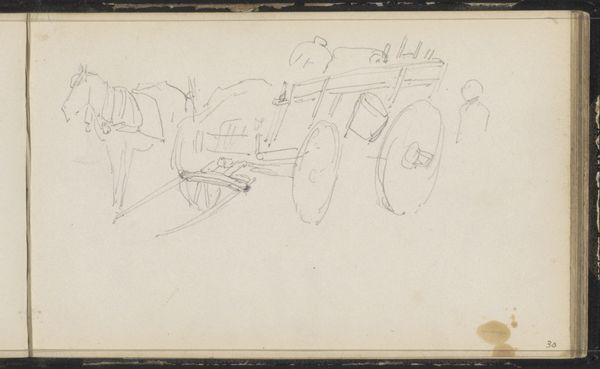
drawing, pencil
#
drawing
#
toned paper
#
light pencil work
#
quirky sketch
#
pencil sketch
#
sketch book
#
landscape
#
personal sketchbook
#
idea generation sketch
#
pen-ink sketch
#
pencil
#
sketchbook drawing
#
sketchbook art
#
realism
Copyright: Rijks Museum: Open Domain
Curator: Looking at this drawing, it feels like peering into someone's private musings, a fleeting moment captured. Editor: You know, it’s a sketch done in pencil on toned paper by Johannes Tavenraat from around 1840–41. It’s called “Kar met vier wielen, beladen met tassen en tonnen"— a cart with four wheels, loaded with bags and barrels, in English. It's currently held here at the Rijksmuseum. Curator: Loaded, indeed! The cart seems to groan under the weight of... well, everything! There’s such a charming imperfection to the linework. It’s not precise, but that’s what makes it so evocative. It feels so honest. Editor: This simplicity speaks volumes about labour and the everyday burdens people carried, both literally and metaphorically. Think about how class and economic disparities influenced mobility and access during this period. How might those living with precarity find representation, and perhaps even a voice, through sketches like these? Curator: Right. This drawing, born out of daily life and struggle, pushes back against traditional academic portraits. The artist wasn’t glorifying a patron, but documenting an honest depiction of mobility—who moved, with what burdens, and why. It shows the material conditions of the working class. Editor: And the choice of media matters. The light pencil work adds to that sense of immediacy, of transience. As though the artist needed to capture it before the whole precarious structure toppled over. It highlights not only the material aspects of labour, but also alludes to social imbalances of 19th-century Netherlands. Curator: Yes. It makes me consider the unseen people connected to this scene, those pushing, pulling, relying on it all, people often absent from the art of the time. The focus is drawn on this quiet struggle instead. Editor: Thinking about sketches reminds me how valuable they are. We’re allowed access into the artists initial process, the seeds of creation and social commentary laid bare. Curator: It also allows us to think critically about representation then and now. Who gets depicted, and why does that matter so much. Editor: Exactly. There's a deep richness when considering all the factors at play at the time it was conceived.
Comments
No comments
Be the first to comment and join the conversation on the ultimate creative platform.
